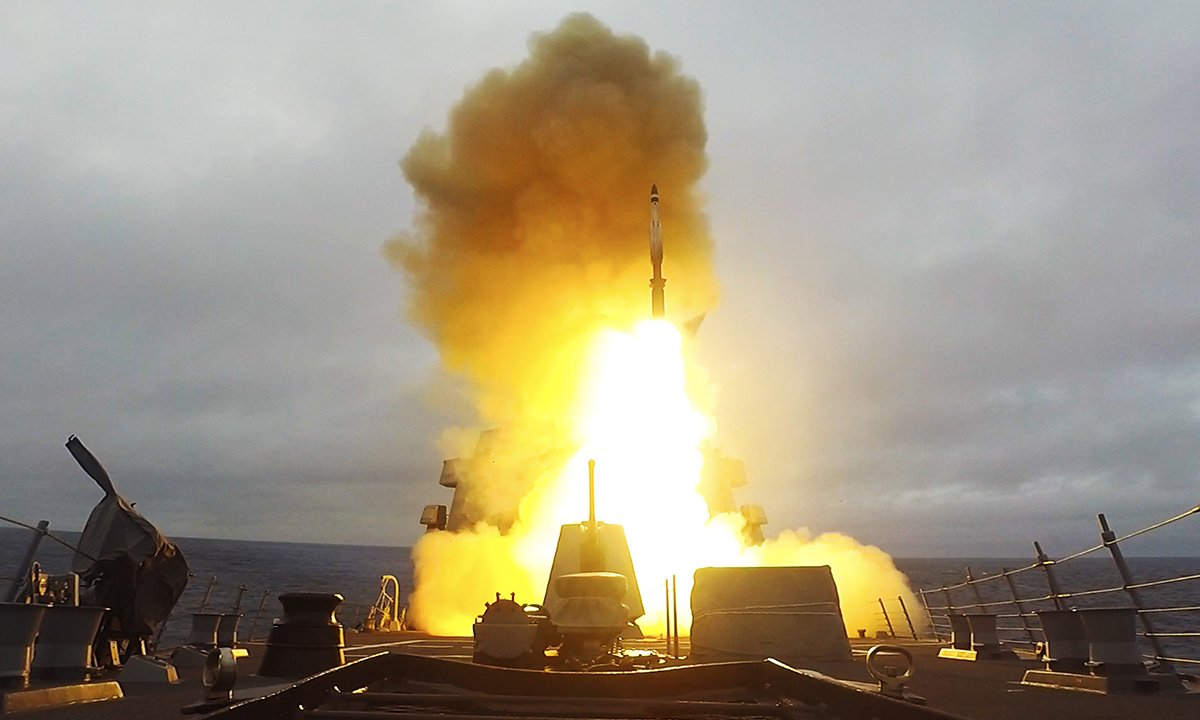During a Senate Armed Services Committee hearing on 24/3, Senator Brian Schatz questioned the extensive use of US air defense missiles to protect Israel from Iranian attacks.
"The recent conflict in the Middle East has consumed a significant amount of US munitions to defend Israel," Senator Schatz said. "Does the US Navy currently have enough SM-3 missiles to meet global demands and counter other threats?"
Admiral James Kilby, the acting chief of naval operations, confirmed a sufficient supply of SM-3 missiles. However, he admitted the navy is using these expensive missiles "at an alarming rate."
"The Missile Defense Agency purchases these missiles and transfers them to the navy," Kilby said. "Our warships are using these missiles quite effectively to defend Israel."
 |
An SM-3 missile launches from the USS Paul Ignatius during an exercise in 5/2021. Photo: US Navy |
An SM-3 missile launches from the USS Paul Ignatius during an exercise in 5/2021. Photo: US Navy
Each SM-3 missile costs $36 million and is part of the Aegis defense system on US destroyers and cruisers. It's an exoatmospheric interceptor designed to destroy ballistic missiles in their midcourse phase, while they are traveling through space.
Upon reaching the correct altitude, the SM-3 releases a kill vehicle that uses kinetic energy to destroy the target, rather than a conventional explosive warhead.
The latest SM-3 Block IIA version is designed to intercept medium-range ballistic missiles, filling the gap between terminal-phase defense systems like Patriot and THAAD. The SM-3 can hit targets up to 1,200 km away and at altitudes of 100 km.
The US Navy first used the SM-3 in combat while defending Israel from an Iranian missile and drone attack in 4/2024. US warships later fired SM-3s in response to an attack involving over 180 Iranian ballistic missiles targeting Israel in 10/2024.
Last week, a US official stated that a warship launched interceptor missiles to defend Israel against further Iranian attacks. However, the specific type of missile wasn't disclosed. The total number of SM-3s fired by the US Navy in defense of Israel remains unclear.
The US Naval Air Systems Command has previously stated its need for more SM-3 missiles to address threats in the Pacific. Some experts have expressed concern over the high rate of SM-3 usage in Middle Eastern conflicts, particularly given the lack of a comprehensive plan for replenishing these missiles.
During the hearing on 24/6, Senator Mitch McConnell questioned how the Navy and Marine Corps are handling the issue of munitions not being produced quickly enough to replenish stockpiles.
Navy Secretary John Phelan acknowledged this as a serious concern that US officials are working to address. "Both the Secretary of Defense and the President have placed a high priority on this issue, and we are working diligently on it," Phelan said, without providing specifics.
Nguyen Tien (AFP, AP, Business Insider)












